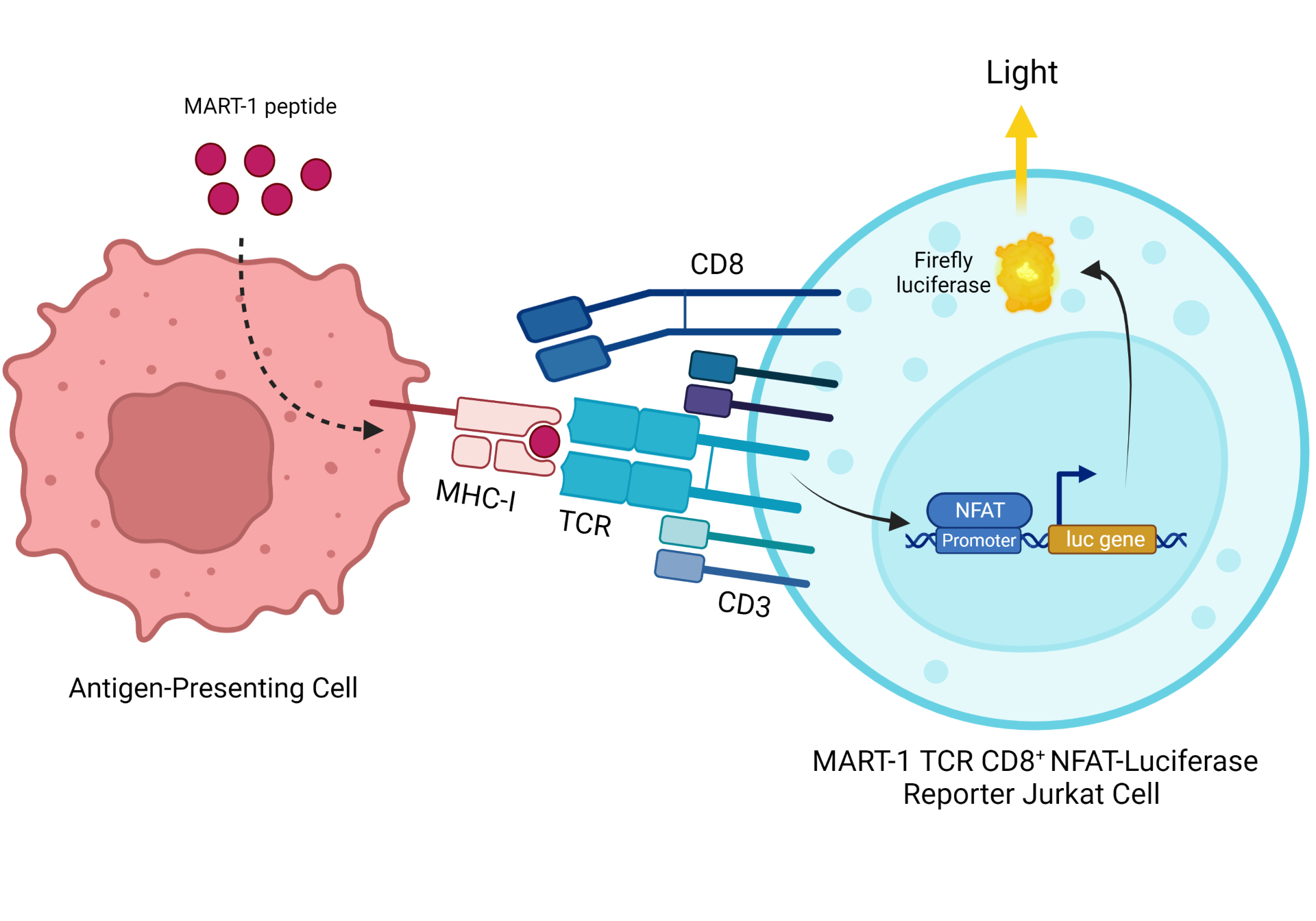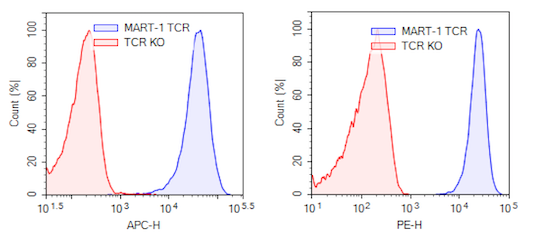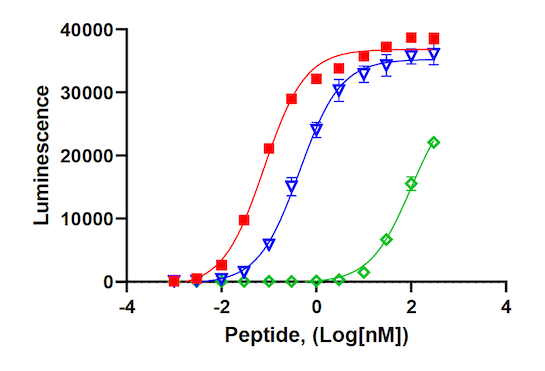MART-1 TCR (DMF4) CD8+ NFAT-Luciferase Reporter Jurkat Cell Line
MART-1 TCR (DMF4) CD8+ NFAT-Luciferase Reporter Jurkat Cell Line is a Jurkat cell line generated from the T Cell Receptor (TCR) Knockout NFAT Luciferase Reporter Jurkat Cell Line (BPS Bioscience #78556) by overexpression of human CD8 (NM_001768.6) and MART-1-specific TCR (DMF4) using lentiviral transduction (CD8a Lentivirus #78648 and MART-1-Specific TCR Lentivirus Clone DMF4 #78678). The human TCR clone DMF4 specifically recognizes tumor antigen MART-1 (Melanoma-associated antigen recognized by T cells-1, or Melan-A).

Figure 1: Illustration of the functional co-culture assay used to validate the MART-1 TCR (DMF4) CD8+ NFAT-Luciferase Reporter Jurkat cell line.
Purchase of this cell line is for research purposes only; commercial use requires a separate license. View the full terms and conditions.
| Name | Ordering Information |
| Thaw Medium 2 | BPS Bioscience #60184 |
| Growth Medium 2T | BPS Bioscience #78756 |
| Assay Medium 2D | BPS Bioscience #78755 |
| CD8+ TCR KO NFAT Luciferase Reporter Jurkat Cell Line | BPS Bioscience #78757 |
| T2 Cell Line | ATCC #CRL-1992 |
| MART-1 (26-35) Peptide | BPS Bioscience #78759 |
| MART-1 (26-35, Leu27) peptide | BPS Bioscience #78760 |
| MART-1 (27-35) Peptide | BPS Bioscience #78761 |
| APC MHC I Dextramer (HLA-A*02:01 ELAGIGILTV) | Immudex #WB02162 |
| PE anti-human α/β T Cell Receptor Antibody | Biolegend #306707 |
| ONE-Step™ Luciferase Assay System | BPS Bioscience #60690 |
| 96-well tissue culture plate, white, clear bottom |
The cell line has been screened to confirm the absence of Mycoplasma species.
MART-1 is a differentiation antigen expressed on the surface of melanocytes. A peptide fragment of the protein is found in MHC complexes that are recognized by CD8+ cytotoxic T cells. MART-1 is present in most skin cancers, including melanomas, and is used as a biomarker for diagnostic purposes. Since the expression of the protein is restricted to melanocyte containing tissues (skin and retina), and is not found in other tissues, MART-1 is an attractive target for cancer vaccines and adoptive cell therapy. The MART-1 peptide 26-35 is a fragment commonly associated with MHC and recognized by T cell receptors.
CD8 (Cluster of Differentiation 8) is a co-receptor of TCR and a typical marker of cytotoxic T cells. The TCR protein complex is found on the surface of T cells and is responsible for recognizing antigens bound to MHC (Major Histocompatibility Complex) molecules. Stimulation of the TCR results in activation of downstream NFAT (Nuclear factor of Activated T-cells) transcription factors that induce the expression of various cytokines such as interleukin-2 to 4, and TNF-alpha. The use of engineered TCR allows T cells to target specific antigens present in cancer cells, via the MHC, expanding the portfolio of antigens that can be targeted in cancer cell therapy.



